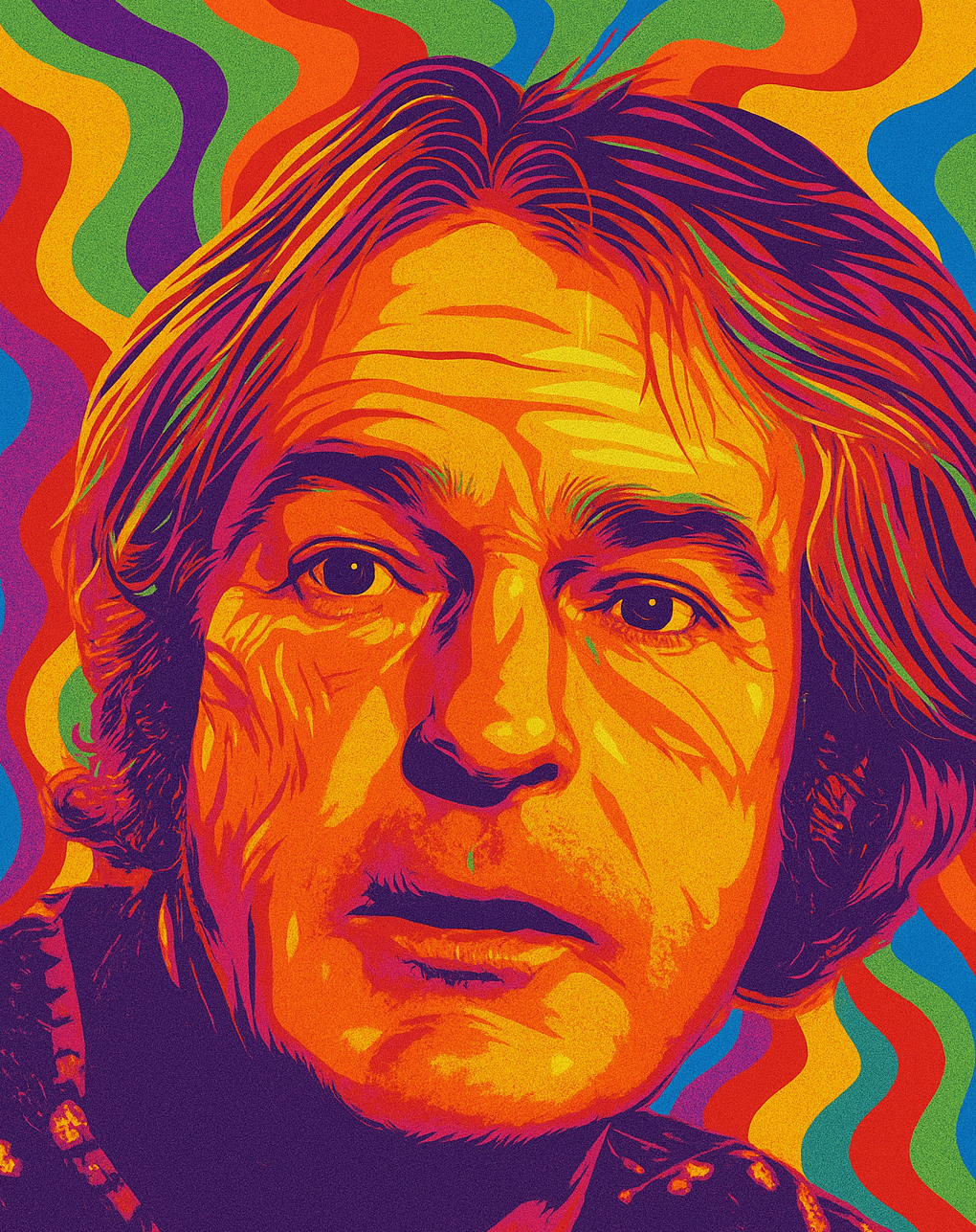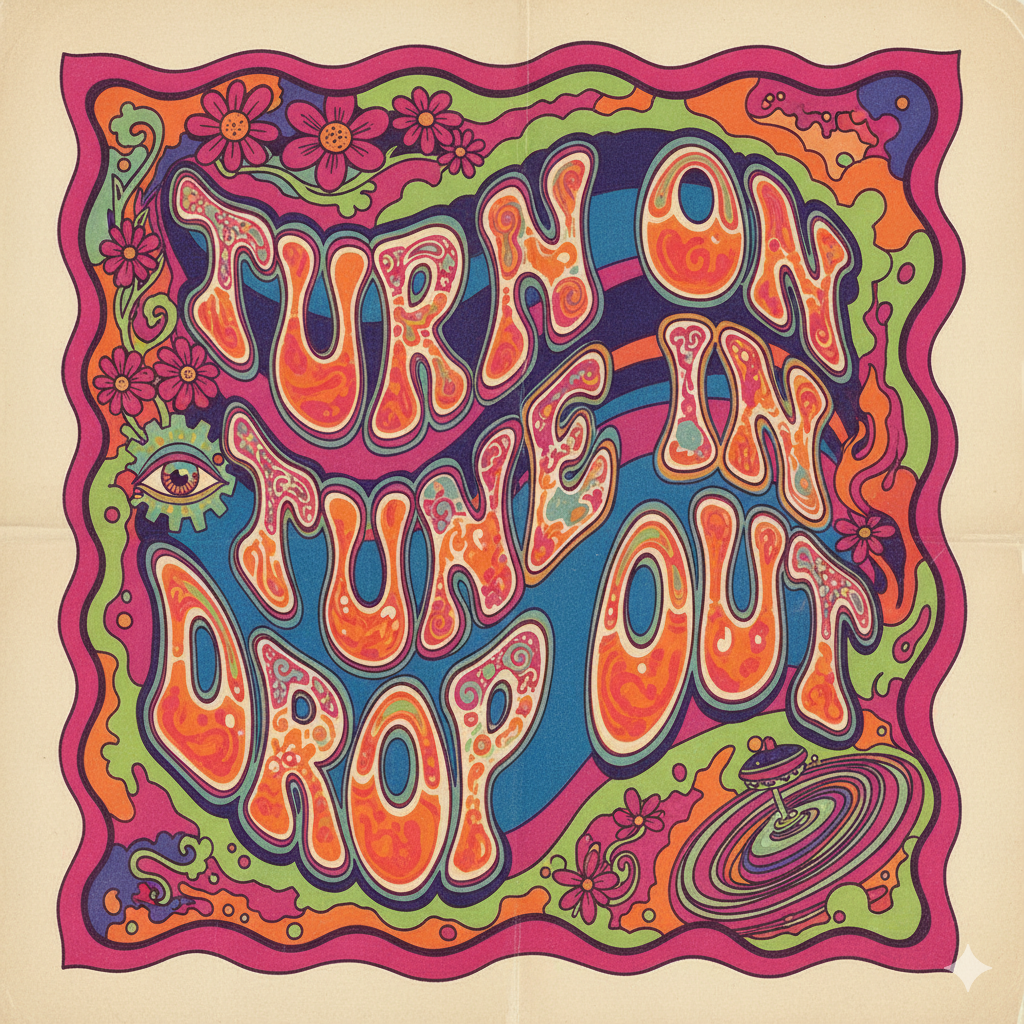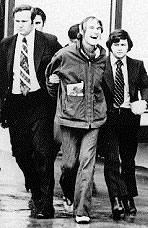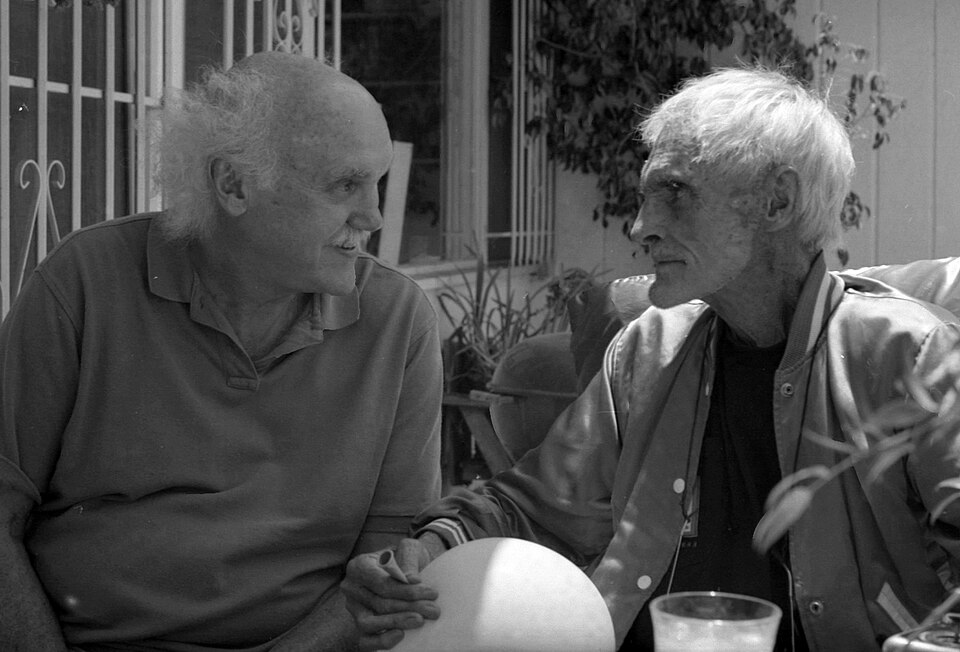Timothy Leary: From Harvard to Prophet of LSD and Consciousness
- Leary, the Scientist Who Sought the “Shared Experience”
- Harvard and the Trip That Changed Everything
- The Concord Prison Experiment: Science Without Rigor
- The Countercultural Prophet: “Turn On” and the Path to Prohibition
- Public Enemy: Leary’s Pursuit and Escape
- From LSD to the Digital Era: Leary and His Final Frontier
- An Ambivalent Legacy, Pioneer, and Warning
- Sources
Timothy Leary was not just a Harvard psychologist; he was a revolutionary of consciousness, a scientist who became a guru, a man whose life overflowed the boundaries of academia to shake the entirety of Western culture. His personal evolution, from clinical laboratories to the barricades of the counterculture, marked a turning point in how we understand the human mind.
This story navigates his academic roots, his daring psychedelic experiments, the storms of controversy that pursued him, and the contradictory legacy that today inspires both scientists and explorers of consciousness.
Leary, the Scientist Who Sought the “Shared Experience”
.jpg)
Before becoming the rebellious psychedelic guru who made history, Timothy Leary was a young researcher with great talent and a bright future. He studied at the University of Alabama and later at Berkeley, where in 1950 he completed his Ph.D. in clinical psychology. Even at that time, he demonstrated a curious and original mind: he compared the behavior of human groups to a “psychotron,” an imaginary machine that could physically measure social interactions with precision.
Leary had an obsession with scientific objectivity, reflected in his book Interpersonal Diagnosis of Personality, where he sought to understand and predict how people act depending on the situation. But beyond science, something deeply unsettled him: he wanted to break the separation between researcher and subjects, creating what he called a true “shared experience.” This radical idea would be the seed that, years later, would germinate in his psychedelic experiments and shape his legacy.
This "shared experience" referred not only to the act of researching but to a radical new way of understanding the relationship between scientist and subject. Leary broke away from the traditional stance in which the researcher remains distant and objective, proposing instead that we can truly understand an experience only if we live it alongside the person experiencing it. In his psychedelic studies, this meant that he and his team consumed the same substances as participants, to fully empathize with their mental and emotional states and tear down the hierarchical barriers science usually imposes. In this way, he aimed to create a space of equality where knowledge emerged from shared living and mutual respect.
Harvard and the Trip That Changed Everything
In 1959, Leary appeared headed for a brilliant academic career as an assistant professor and clinical psychologist at Harvard. However, a year later, an unexpected trip to Mexico changed his course forever. There, he had his first encounter with psilocybin mushrooms, an experience he described as "the most profound religious experience of my life"; an awakening that opened the door to a new paradigm, more subjective and spiritual.

Back at Harvard, and together with Richard Alpert (who would later be known as Ram Dass), he founded the Harvard Psilocybin Project. This pioneering project sought to study the effects of psilocybin on volunteers ranging from students to artists, trying to understand how “set and setting” (the internal mental state and the physical-social environment) shaped that psychedelic experience.
Among his most notable studies was the "Good Friday Experiment", in which psilocybin was administered to theology students to investigate whether the substance could catalyze a genuine mystical experience. What truly broke boundaries was his decision to consume the substance alongside his subjects. Thus, rather than just observe, Leary and his team shared and lived the experience firsthand, completely challenging the traditional scientific method and establishing a direct connection with participants.
However, as the project progressed, the paths of Leary and Alpert began to diverge. Alpert would soon leave academia after being dismissed and, under the name Ram Dass, direct his life towards a devotional spirituality marked by Hinduism and meditation, while Leary plunged ever deeper into the realm of the psychedelic counterculture. Decades later, their reunion at the doorstep of Leary’s death became a moment loaded with symbolism: two visions of the same inner journey that diverged but met again in life’s final stretch.
You are as young as the last time you changed your mind.
Timothy Leary
The Concord Prison Experiment: Science Without Rigor
Among his most ambitious projects was the Concord Prison Experiment (1961–1963), in which 32 young volunteer prisoners received therapy assisted with psilocybin. At first, results seemed revolutionary: only 25% returned to prison within six months, compared to the 69% expected in similar situations. But that joy soon turned to skepticism. Later investigations revealed critical flaws: the study lacked proper controls, was neither randomized nor double-blind, and the group studied was biased toward prisoners close to release, affecting the data.
Additionally, the practice of the researchers themselves consuming psilocybin with prisoners crossed a fundamental ethical line, compromising objectivity and the duty of care toward vulnerable participants, creating a bias hard to justify scientifically. Decades later, Rick Doblin conducted a deep analysis and concluded that the initial reduction in recidivism was not statistically significant in the long term. In reality, close post-release supervision of prisoners was the true key. The message was clear: psilocybin alone is not a panacea; it must be integrated into comprehensive treatment with ongoing support.
The Countercultural Prophet: “Turn On” and the Path to Prohibition
The Harvard Psilocybin Project, with all its controversy, accelerated the institutional and social backlash against Leary. In 1963, he was officially dismissed for failing to meet his academic obligations, though the real reason was his irreverent promotion of recreational psychedelic use and his challenge to the status quo. Leary then made a definitive leap: he abandoned academic seriousness to become a countercultural prophet and popularized his famous slogan "Turn On, Tune In, Drop Out".
For Leary, this was not a call for escapism but a roadmap for awakening consciousness:
- "Turn on": activate your brain’s potential
- "Tune in": connect with the cosmos or internal energy pattern
- "Drop out": abandon obsolete social conventions

This slogan was revived and amplified in The Psychedelic Experience: A Manual Based on the Tibetan Book of the Dead (1964), written with Richard Alpert and Ralph Metzner, a key work that shifted his interest from experimental psychology to a spiritual guide inspired by Eastern conceptions of death and rebirth.
He moved to a mansion in Millbrook, New York, where he continued his experiments in a more mystical environment, indirectly inspiring figures like Ken Kesey and his Merry Pranksters. However, his irresponsible public promotion of psychedelic use had serious consequences. In 1966, LSD and psilocybin were classified as Controlled Substances in the United States, making their use illegal and halting legitimate scientific research for decades. For traditional psychiatric circles, Leary and his methods became associated with a stain hard to overcome.
Public Enemy: Leary’s Pursuit and Escape
Leary’s rhetoric became increasingly radical over time. After being convicted of marijuana possession, in 1970 he staged a spectacular prison escape organized by the radical group Weather Underground. From exile, he issued an explosive call for a “world ecological religious war” and advocated active resistance against the repressive system.

Richard Nixon’s government labeled Leary "the most dangerous man in America". During years of fugitivity and exile, he sought refuge with Eldridge Cleaver and the Black Panthers in Algeria, spent time in Switzerland, and was eventually captured in Afghanistan in 1973, spending several years in prison before being released.
From LSD to the Digital Era: Leary and His Final Frontier
In his final years, Leary shifted his exploration of the mind to the digital world, proclaiming: “The PC is the LSD of the ’90s. ‘Jack in’ is the new way to ‘turn on’”. He thus adapted his slogan to “turn on, boot up, jack in.” His provocation never ceased, even sharing the stage with former enemies in public debates.
In this last phase, Leary systematized his thought into a complex theoretical framework known as the Eight-Circuit Model of Consciousness. He postulated that the human brain operates with eight “mini-brains” or “gears”: the first four linked to terrestrial survival (language, sex, territory, etc.) and the last four to the evolution of the species and transcendence. For Leary, the goal of personal growth was to “activate” and master these higher circuits (often accessible through psychedelics, yoga, or, in his later vision, technology). This model not only served as a map for his exploration of the mind but also cemented his transition to “info-psychology” and his fascination with the digital world as the new frontier for expanding consciousness.
In 1995, he was diagnosed with terminal prostate cancer and turned his agony into what he called a designer dying experience. He gathered friends, including Ram Dass, and made his farewell a final performance, where death was understood as the final journey. Though he considered cryonics as a possibility (awaiting the future resurrection of the body through technology), he ultimately chose to be cremated and have part of his ashes scattered in outer space. In his final days, he organized a lively “death party” in Beverly Hills, even broadcasting parts of his final moments over the internet. For him, this was his last trip, the ultimate psychedelic experience.

An Ambivalent Legacy, Pioneer, and Warning
You can’t use butterfly language to communicate with caterpillars
Timothy Leary
Although Timothy Leary’s public image and excesses helped stigmatize psychedelia and halt research for many decades, his work planted a fundamental seed. His methodological mistakes made it clear that advancement required solid scientific rigor, based on controlled trials, informed consent, and ethical care that today form the foundation of the psychedelic research revival. Institutions like MAPS (Multidisciplinary Association for Psychedelic Studies) and centers at universities like Johns Hopkins or Imperial College London continue exploration, but focused on those standards Leary could not fully apply.
Leary’s life represents that constant tension between courage to challenge norms and the need for scientific discipline. It reminds us that boldness is necessary to open paths, but without responsibility and rigor, those paths can become unstable or harmful. Today, psychedelic science moves forward through the door he opened, with its successes and missteps, and continues to serve as inspiration for those seeking to understand and expand the limits of human consciousness with a serious and committed perspective.
Sources
- https://psychology.fas.harvard.edu/people/timothy-leary
- https://en.wikipedia.org/wiki/Timothy_Leary
- https://tripsitter.com/people/timothy-leary/
- https://www.thecrimson.com/article/1970/9/28/learys-communique-ptimothy-leary-was-fired/
- https://en.wikipedia.org/wiki/Harvard_Psilocybin_Project
- https://archives.nypl.org/mss/18595 https://reason.com/2025/02/09/the-most-controversial-paper-in-the-history-of-psychedelic-research-may-never-see-the-light-of-day
- https://web.archive.org/web/20090831022402/http://geocities.com/arno_3/bio/




















